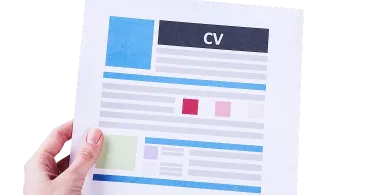 Applying for grants, scholarships or fellowships gives you a chance to either receive a funding for your college tuition or take part in interesting projects and get funded by the hosting organization. At this point, you’ll have a lot of competition going on.
Applying for grants, scholarships or fellowships gives you a chance to either receive a funding for your college tuition or take part in interesting projects and get funded by the hosting organization. At this point, you’ll have a lot of competition going on.
Most grant and scholarship organizations demand participants to provide their CVs or resumes along with the basic application and a motivation letter. The purpose of the first two is presenting information about your current experience, education, skills, and your academic achievements.
The thing is that students can’t usually boast with a broad experience. Thus, they might spend days in order to keep the content of their CV or resume for scholarships relevant and polished.
In some cases, like with the resume for a college scholarship, students can apply for professional college admission resume writing and ultimately increase their chances to get a desirable funding. Certainly, you can work on your own. All colleges are different and some med, grad, or law schools would require a CV (Curriculum Vitae) or resume.
Thus, remember the main difference: resumes are usually short and never longer than 1-2 pages, meanwhile, CVs are bulkier.
The most common document out of the two is probably a CV, as it includes everything from your academic background to received honors and awards. So, do you want a 100% winning and effective Curriculum Vitae for scholarship application? Then follow the steps below!
 What came to your mind, when you first wondered how to write a resume for a scholarship? Of course, everything starts with gathering data about your basic qualifications, including information about your education, achievements, awards and other relevant skills to help you win the competition. Including your standardized test results, such as your GMAT score, will also enhance your resume.
What came to your mind, when you first wondered how to write a resume for a scholarship? Of course, everything starts with gathering data about your basic qualifications, including information about your education, achievements, awards and other relevant skills to help you win the competition. Including your standardized test results, such as your GMAT score, will also enhance your resume.
Think well before deciding which ones are really worth mentioning on your CV and which ones could either be omitted or listed somewhere else on your application summary.
When building any CVs it’s important to keep a strict order. This way it looks organized and easy-readable for the recruiter. As for student resume for scholarships, the most winning order is the following:
 We all want to blow our trumpets to show off our versatility and universalism in order to get accepted. Nevertheless, any resume for a scholarship should be free of lies and embellishments. After all, you shouldn’t forget the main rule of any CV and resume: each of your claims has to be proved with facts and actions.
We all want to blow our trumpets to show off our versatility and universalism in order to get accepted. Nevertheless, any resume for a scholarship should be free of lies and embellishments. After all, you shouldn’t forget the main rule of any CV and resume: each of your claims has to be proved with facts and actions.

And seriously, lying about your fake achievements and skills in a CV for a scholarship doesn’t make any sense – people working at the committee are experts with years of experience, who easily spot liars right away.
Meantime, you don’t have to make an impression of an absolutely perfect candidate, because those ones do not exist. All you want from a CV for grad school scholarship application is to make the committee consider your candidacy in the first place and leave other opponents behind. Also, do not be afraid because of resume gaps.
As for unemployed people, they can mention a few relevant unemployment activities they’ve performed during the break.
When writing a CV for scholarship application, pay a great attention to both the content and possible errors. Take your time to check your CV over and over again before sending it out.
Keep in mind that winning CVs and resumes are the result of your own expertise and good writing skills. This is your number 1 self-marketing tool. Thus, take your time and do your best to write worthy application documents. Good luck!